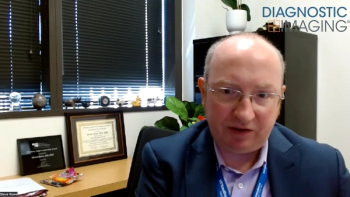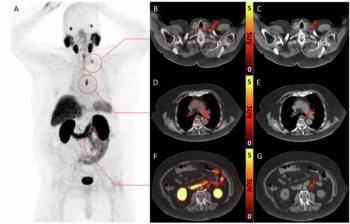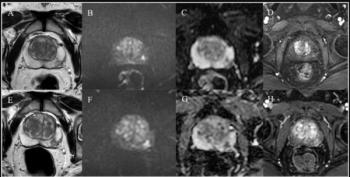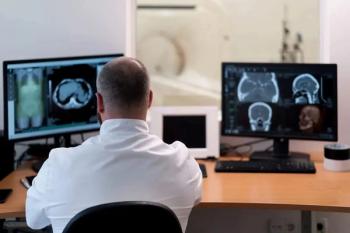
ADAC shifts to products developed in-house
ADAC Laboratories hopes to gain market leadership in nuclear medicineby 1994. Coming from a vendor that saw nuclear medicine revenuesslide 30% last year, that spells confidence. Overtaking Siemens,current nuclear leader, represents a major hurdle. To
ADAC Laboratories hopes to gain market leadership in nuclear medicineby 1994. Coming from a vendor that saw nuclear medicine revenuesslide 30% last year, that spells confidence. Overtaking Siemens,current nuclear leader, represents a major hurdle.
To accomplish this task, ADAC must prove to customers thatit has again become the nuclear medicine innovator it was in thelate 1970s, before it poured R&D resources down the blackhole of digital subtraction angiography development. ADAC hasbuilt up its in-house R&D expertise to the point where itcan introduce a new nuclear medicine camera every year, said presidentand COO Stanley Czerwinski.
ADAC will introduce a round-detector gamma camera in Europethis year, which is pegged to replace a Philips camera that theMilpitas, CA, medical imaging vendor sells in North America. Thisfollows the introduction last year of Pegasys, a nuclear medicineworkstation based on Sun Microsystem's SPARC microprocessor technology.
Philips entered into a nuclear medicine relationship last yearwith Digital Design of France. Digital Design manufactures Philips'Gamma Diagnost round and large rectangular field-of-view gammacameras in France and sells both cameras in the French market.The firm's U.S. subsidiary in Atlanta also gained rights to sellthe rectangular camera in North America (SCAN 2/14/90).
Following the introduction of ADAC's circular camera, the firm'sR&D force will begin development of a multihead camera dedicatedto cardiac imaging, Czerwinski said.
Genesys, ADAC's premium nuclear medicine camera, was originallysupplied to the vendor by Ohio Imaging, which was subsequentlyacquired by Picker International. Two years ago, however, ADACacquired technology and manufacturing rights for Genesys fromOhio Imaging (SCAN 6/7/89). ADAC also licensed basic nuclear medicinepatents from Johnson & Johnson last year (SCAN 10/4/90). OhioImaging was formed by former employees of J&J's now-defunctTechnicare subsidiary and used Technicare nuclear technology.
ADAC took several years to develop its Pegasys workstation.This was longer than the company--and its customers--expected.Rebuilding customer confidence is an immediate concern of thefirm, Czerwinski said.
"We still have to bear the pain of the fact that we madepromises to people that took so long to fulfill," he toldSCAN.
Nuclear Medicine sales for ADAC Laboratories should be 20%higher in 1991 than in 1989, the vendor's best year, Czerwinskisaid. Nuclear revenues fell 30% in fiscal 1990 (end-September)due in part to the Pegasys delay. Pegasys was upgraded to Pegasys2 in April, using the more powerful SPARC 2 processor.
As many as 300 Pegasys systems may be installed worldwide byyear-end, Czerwinski said. ADAC also began regular shipments ofits Dual Head Genesys camera in April and expects to have 40 to50 installations by the end of the year.
Many vendors that introduced multidetector single-photon emissioncomputed tomography cameras at the Society of Nuclear Medicinemeeting in Cincinnati last month are not ready to ship these systems,he noted.
ADAC must achieve several strategic objectives over the nextthree years if it is to gain market leadership in nuclear medicine,Czerwinski said. Pegasys and Dual Head Genesys started the processby positioning the vendor as a supplier of leading-edge technology.The next step is to build post-sales support in the areas of applicationstraining and equipment service. ADAC began improving its post-salessupport resources last year.
Finally, ADAC has to solidify its reputation in the nuclearmedicine market, he said. Customers must be convinced not onlythat the firm has long-term viability but that it can outperformother, larger competitors.
"Why customers buy (from a particular company) alwayscomes down to the same factors: quality of product, quality ofsupport, and reputation," Czerwinski said.
The firm removed one thorn from its reputation with the settlementof a class-action shareholder suit last month. The suit stemmedfrom ADAC's financial problems last year. It charged that financialreports preceding the drop in performance had been too rosy. Acharge of as much as $1.8 million may be made against the vendor'searnings as a result of the settlement.
ADAC continues to develop products in its two related fields,DSA and radiology information systems, although nuclear medicineabsorbs 75% of the firm's investment. Much of the technology developedfor Pegasys and other products may be leveraged to benefit theseother product lines, Czerwinski said.
Newsletter
Stay at the forefront of radiology with the Diagnostic Imaging newsletter, delivering the latest news, clinical insights, and imaging advancements for today’s radiologists.






























